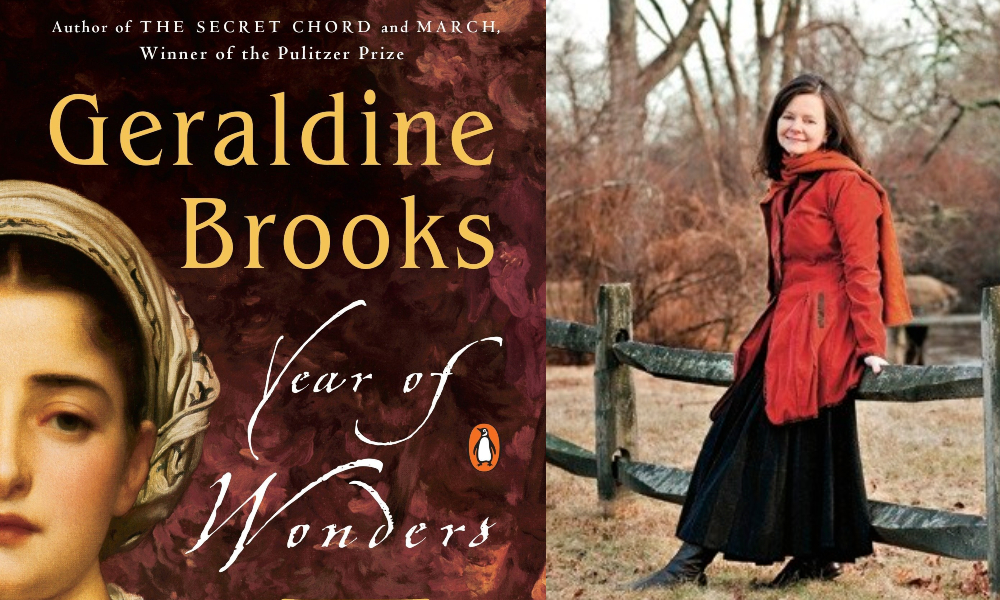When I first started hearing reports about the closing of Wuhan province I couldn’t help but think of the English village of Eyam that in the 17th century fell victim to the bubonic plague. The “Black Death” as it was called was thought to have arrived in the village via a traveling tailor from London carrying infected clothing. Once the village realized the plague was in their midst, they made a remarkable decision. The villagers decided to self-quarantine, closing the village off from the surrounding area. For more than a year no one came in and no one left. The costs—250 villagers out of an estimated population of between 350-800 died—were tremendous. But it worked. The disease didn’t reach the neighboring villages. I first learned of Eyam in Geraldine Brooks’s wonderful novel Year of Wonders that tells the story of what has become known as “The Plague Village.” I recently spoke with Brooks about her novel, Eyam and why we are attracted to dystopian fiction during times of trouble.
What are the lessons of the story of the village of Eyam? And are there any that we can apply to what is happening now?
The main lesson of Eyam is that we seem to have an intense desire to remember and appreciate exceptional acts of self-sacrifice. We lionize heroic acts by individuals all the time, but it’s exceedingly rare to have an entire community come to a consensus of this kind.
Do you remember learning anything particularly shocking or unexpected about historical quarantines while doing research for the book?
Most quarantines—actually all of them, from what I could find out—are mandated. The people have no choice. The 17th-century diarist Samuel Pepys’ description of London shows a complete contrast to what was occurring in Eyam: people being locked up in their houses—the well along with the ill—with no one to bring them food or water. He writes harrowingly of hearing the cries from these houses: “We have become cruel as dogs one to the other.”
It’s remarkable that they understood “social distancing” in the 17th century when we are still struggling with it. How did they know locking up the village would stop the spread?
They knew from experience that certain illnesses passed from person to person on account of proximity. They had no germ theory of disease but they imagined that there might be “plague seeds” that scattered from the afflicted person. Yersinia Pestis is a bacteria, not a virus, and it was a bubonic, not a pneumonic plague—not airborne. It mainly spread from person to person by fleas, although the people of the time did not know that.
The residents of the village were willing to sacrifice themselves for the greater whole. Self-sacrifice has come up repeatedly in the last few weeks—as a reason to isolate and as a reason to carry on. How do you know when your sacrifice is vital or foolhardy?
I’m struggling to think of an example of a foolhardy sacrifice in the context of public health. The kind of sacrifice I think of as foolhardy is, say, risking life for a misguided ideology. But any sacrifice to save human life is, by definition, vital.
In the book at least, part of the reason everyone held fast was the leadership of the church rector, William Mompesson. How important is leadership for managing a situation like this?
Extremely important. Jacinta Arden, New Zealand’s prime minister, is my model for decisive and humane leadership in this crisis. She acted swiftly and dramatically to safeguard her country and continues to communicate with vast empathy regarding the hardships this is causing.
Is there any hope we can glean from their story as we go forward?
Well, it’s a tough story, because the costs to the villagers were extremely high. People died who, individually, would probably have lived, had they fled. Yet the outbreak was contained to the village, so many more lives were saved in surrounding communities. A sad element that I did not include in the novel was that the village did not swiftly recover after the plague. The losses were too great. Also, it remained socially isolated because outsiders feared infection might linger there and flare up again. People in the village also turned against Mompesson, blaming him for their ordeal, and he had to leave the community. The only “hope” in the story is, I guess, the fact that it continues to inspire and to provoke us to question what we are willing to do for a greater good.
A lot of people I know are revisiting books about viruses, plagues and contagion. Why do you think we seek out fiction about what we are the most afraid of?
We want, I suppose, to know how others answered the question when it was put to them, and then to ask ourselves, Who would I be in that story?
Moment Magazine participates in the Amazon Associates program and earns money from qualifying purchases.

